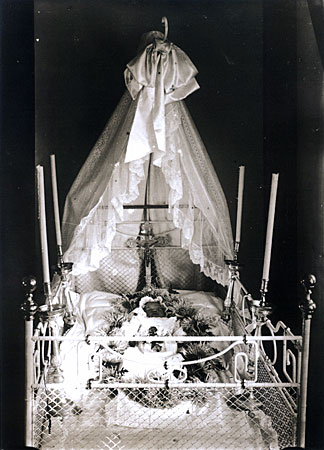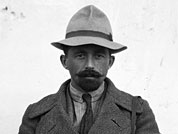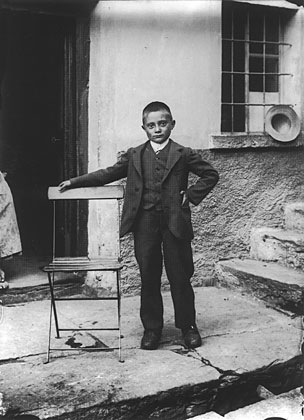A doctor on childbirth

A doctor responsible for public health in the district of Bellinzona describes an incident in 1809 which ended with the fatal injury of the infant and the death of the mother.
Ticino had the worst record among Swiss cantons for infant mortality at the time. The deaths occurred either during delivery or in the first year of life. Qualified midwives were all but unheard of in the canton.
The following is an excerpt from a letter doctor Isidoro Bruno wrote to the government, describing one incident in the village of Pianezzo, where a woman in labour was attended by a country midwife.
Bruno’s letter was included in the doctoral thesis (academic year 1982-83) of Rosario Talamco on hygiene and public health in Ticino in the first half of the 19th century.
“Terrible consequence”
“[…]One arm at a time appeared of the foetus of this woman, while the remainder of the body was in such a position as to render the delivery unnatural. In these deplorable circumstances, the relatives, having watched the long and fruitless efforts of the woman to bring the child to birth, decided to seek out a country midwife of their acquaintance.
When they found her and brought her urgently to the house of the woman who was already exhausted, she immediately began pulling the foetus with all the force she could muster in the very same position in which she found it, without considering the obstacle that was in the way.
A skilled hand could have achieved the desired result in no time, by putting the arm back and looking instead for the baby’s feet, in other words by turning it round to perform a breech delivery. But, good Lord, what was the terrible consequence of such an ignorant procedure? I’m sure you can imagine it, Citizen Counsellors.
“Horrible to behold”
In fact there were three fateful consequences: first, she broke the arm close to where the humerus joins the scapula, so that the limb remained attached only by a bit of skin, and the remainder of the arm, both above and below, together with the shoulder, was so swollen and gangrenous that it was horrible to behold, with the result that the foetus quickly died.
Secondly, she had forced the foetus further down into the bony structure of the pelvis so that it would no longer move, like a nail embedded in a plank. Thirdly, she had so greatly abused and mistreated the women’s birth canal with the idea of stretching it wide to allow the foetus to come out that these parts swelled up, tumefied and became so enflamed as to cause even more invincible obstacles to its emergence.
How the poor woman must have suffered from such handling! God alone knows. I do know, however, that her strength ebbed steadily away, raising fears of her imminent death. When the midwife saw what destruction she had caused, she fled the village, leaving the woman in such a pitiful state that I was called to remedy it, if possible. But, O Lord, what a horrific scene awaited me! […].”
Ticino population:
1850: approx. 118,000
1900: 139,000
1950: 175,000
2000: 307,000
Today: 330,000
(Official canton Ticino statistics)

In compliance with the JTI standards
More: SWI swissinfo.ch certified by the Journalism Trust Initiative



You can find an overview of ongoing debates with our journalists here. Please join us!
If you want to start a conversation about a topic raised in this article or want to report factual errors, email us at english@swissinfo.ch.